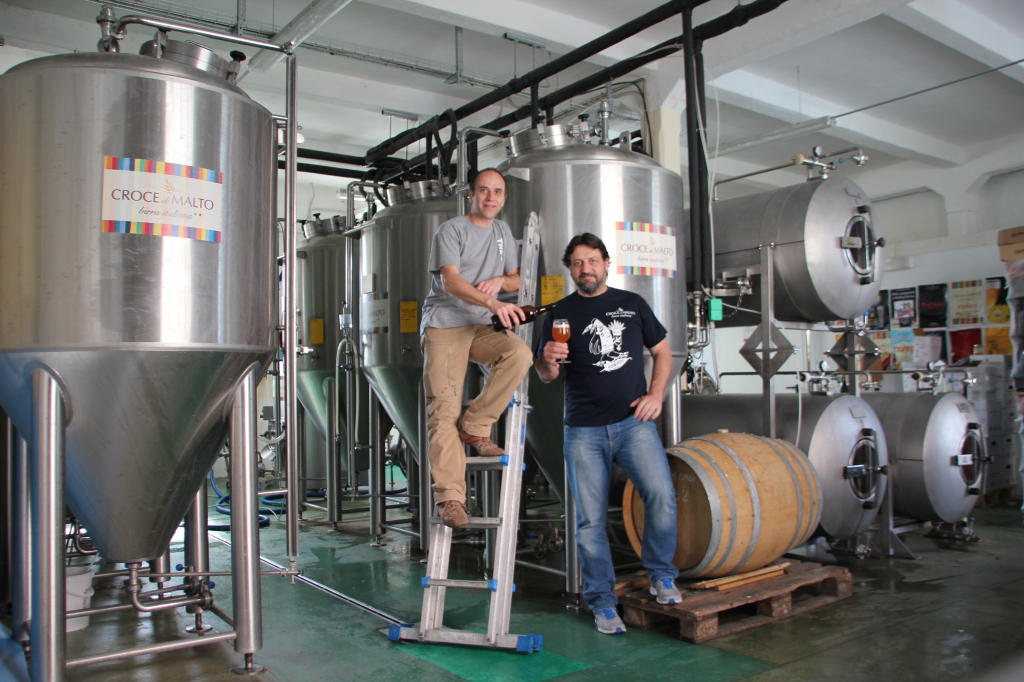‘Temporis’ is the ideal beer for spring, ‘Umbra’ is dedicated to the summer, and ‘Platinum’ is the Christmas beer, vigorous and extraordinary for the formats in which it is proposed, too, which go up to the 12-litre bottle (in the region of Champagne, this bottle is called ‘Balthazar’). These are three of the seasonal beers produced by ‘Croce di Malto’, the brewery of Trecate, in the province of Novara, founded by Alessio Selvaggio and managed alongside with his associate partner Federico Casari.
And if Federico is the ‘commercial soul’ of Croce di Malto, Alessio is the custodian of the knowledge regarding production methods, that is to say the setting-up of the beers after a careful study and the assembly of the suitable raw materials suitable for achieving the proposed aim, that consists in quality without compromise, which has been recognized several times in international competitions that have allowed the two associate partners to get noticed in Countries characterized by a strong brewing tradition, by starting export to Belgium, Finland, Canada, Brazil, and Japan.
Unusual scents and tastes
The Esteemers of beer appreciate this product because neither pasteurisation nor filtration are adopted. These processes, although make the product more stable over time, remove precious element, just the ones which offer to a living beer its unmistakable characteristics.
Alessio, who acquired a cultural training as food technologist and in his youth was a homebrewer, decided to start a less individualistic production in the late '90s, by supporting the spread in Italy, too, of a higher awareness in the consumption of quality beer. He began to attend the German breweries, which were already ahead in this field, chose the system that was more responsive to his goals, and in 2006 was at work. Since then, Croce di Malto went a long way, until it established itself as one of the best Italian breweries, with no less than five labels, always available, and other seasonal ones, such as the above mentioned beers.
Distinctive Features
The always available beers are Triplexxx, Hauria, Triticum, Magnus, and Acerbus.
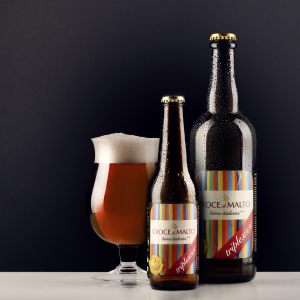 Triplexxx is double malt, amber yellow (7.8% alcohol content) beer. It boasts the absolute first place at the international competition ‘Mondial de la bière’ in 2009, the third place at the Australian International Beer Awards in 2013, and still the third place in the contest ‘Birra dell’anno 2014’ (Beer of the Year 2014), organized by the ‘Unionbirrai’ Association. It distinguishes itself for the wise blend of three different cereals which are used, namely barley, oats, and wheat, in perfect harmony with three hops and three exotic spices. Alessio explains: «The oats gives the beer a silky, elegant, delicate body. In this case, this excellent quality is enhanced by the presence of two different kinds of pepper and coriander».
Triplexxx is double malt, amber yellow (7.8% alcohol content) beer. It boasts the absolute first place at the international competition ‘Mondial de la bière’ in 2009, the third place at the Australian International Beer Awards in 2013, and still the third place in the contest ‘Birra dell’anno 2014’ (Beer of the Year 2014), organized by the ‘Unionbirrai’ Association. It distinguishes itself for the wise blend of three different cereals which are used, namely barley, oats, and wheat, in perfect harmony with three hops and three exotic spices. Alessio explains: «The oats gives the beer a silky, elegant, delicate body. In this case, this excellent quality is enhanced by the presence of two different kinds of pepper and coriander».
Croce di Malto recommends sipping its beer with the correct gastronomic combination, which for Triplexxx may be the one with either vegetable risotto or risotto with saffron, or with marbled and average ripened cheeses.
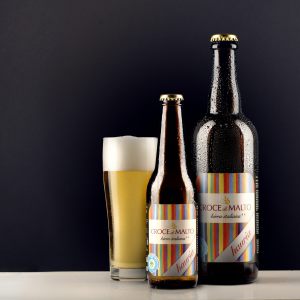 Hauria (4.9% alcohol), the first classified one as ‘Beer of the Year 2014’, and second one in the edition of 2013, boasts the brand ‘Hops from Hallertau’. This acknowledgement was granted as it has been the first Italian beer which used only hops coming from Germany, known for the quality of its raw material that gives this beer a pleasant embittering note. Hauria is inspired by the Kolsch style, typical of Cologne. Its colour is golden yellow and it is produced by the high fermentation method. It is bitter and slightly sour, and in harmony with the taste of bread crust. It goes very well with salami and cold pork meats as well as roasted pork.
Hauria (4.9% alcohol), the first classified one as ‘Beer of the Year 2014’, and second one in the edition of 2013, boasts the brand ‘Hops from Hallertau’. This acknowledgement was granted as it has been the first Italian beer which used only hops coming from Germany, known for the quality of its raw material that gives this beer a pleasant embittering note. Hauria is inspired by the Kolsch style, typical of Cologne. Its colour is golden yellow and it is produced by the high fermentation method. It is bitter and slightly sour, and in harmony with the taste of bread crust. It goes very well with salami and cold pork meats as well as roasted pork.
Intriguing Spiciness
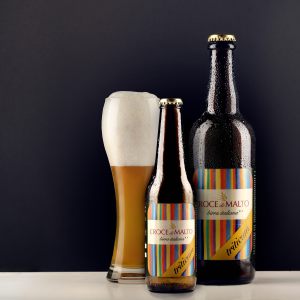 Triticum (4.9% alcohol) is inspired by the German ‘Weisse’, prepared with malted wheat. It distinguishes itself for its pale yellow colour and a clear effervescence. It shows an intense fruity scent, too, which reminds banana, and a slight medicinal hint, characteristic of Teutonic style. It is very refreshing, suitable for grilled white meats, shin of pork, sausages, and fish seasoned with tasty sauces.
Triticum (4.9% alcohol) is inspired by the German ‘Weisse’, prepared with malted wheat. It distinguishes itself for its pale yellow colour and a clear effervescence. It shows an intense fruity scent, too, which reminds banana, and a slight medicinal hint, characteristic of Teutonic style. It is very refreshing, suitable for grilled white meats, shin of pork, sausages, and fish seasoned with tasty sauces.
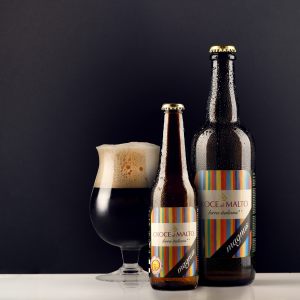 Magnus, too, boasts a plurality of awards: second at the ‘Australian International Beer Awards’ in 2012; in the next edition, it managed to win the first place. In addition, it was ‘Beer of the year 2012’ for the category ‘High alcohol content Belgian style Stouts’, an award which is very indicative of its features. It is a double malt (7.5% alcohol) beer, whose colour reminds monk's frock, with some spices among its ingredients. It is characterized by a good body, it releases an intensely malty aroma with notes of liquorice, carob, and chestnut honey. Its sweet taste, balanced by a light vein of bitterness, reveals a certain astringency, which goes well with grilled or smoked meats, even if it is also a pleasant drink for an after dinner conversation.
Magnus, too, boasts a plurality of awards: second at the ‘Australian International Beer Awards’ in 2012; in the next edition, it managed to win the first place. In addition, it was ‘Beer of the year 2012’ for the category ‘High alcohol content Belgian style Stouts’, an award which is very indicative of its features. It is a double malt (7.5% alcohol) beer, whose colour reminds monk's frock, with some spices among its ingredients. It is characterized by a good body, it releases an intensely malty aroma with notes of liquorice, carob, and chestnut honey. Its sweet taste, balanced by a light vein of bitterness, reveals a certain astringency, which goes well with grilled or smoked meats, even if it is also a pleasant drink for an after dinner conversation.
Explosion of Scents
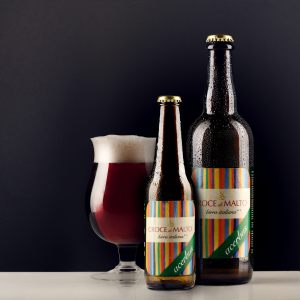 Acerbus is appreciated for the richness of the malts and hops used, which are able to make its profile aromatic, herbal and resinous, typically British. The caramel malts establish a balance among them and also give a marked mahogany colour, as well as the bitter note which originates from the well-chosen mix of hops. Acerbus (5.7% alcohol), that is part of the category of special beers, is characterized by full-body, as well as rather bitter and astringent taste. It gives its best with grilled lamb and pork.
Acerbus is appreciated for the richness of the malts and hops used, which are able to make its profile aromatic, herbal and resinous, typically British. The caramel malts establish a balance among them and also give a marked mahogany colour, as well as the bitter note which originates from the well-chosen mix of hops. Acerbus (5.7% alcohol), that is part of the category of special beers, is characterized by full-body, as well as rather bitter and astringent taste. It gives its best with grilled lamb and pork.
As for seasonal beers, Temporis (6% alcohol) recently won the second place at the World Beer Cup 2014, where it was presented in competition in the category ‘French and Belgian style saison’. Judges’ taste was conquered by its explosion of scents, ranging from fruity to herbaceous ones, because of the different hops used during the fermentation as well as blend of herbs and spices, developed after a long search. Its colour is orange, with beautiful reflections of light, it has a bitter taste which enhances its refreshing ability also given by peppery and citric notes.
Umbrà (3.7% alcohol), too, is very refreshing. It is a beer inspired by the Belgian ‘blanche’ ones, where wheat is not malted (unlike German Weisse) and among its ingredients oats with added spices, too, are included. So, if its colour is pale yellow, its aroma reminds ripe fruit and its delicate taste is precisely due to the presence of wheat, despite the evidence of valuable spiciness. For this reason, it is suitable combined with fresh cheeses and white meats.
Constructive partnerships
Platinum (8% alcohol) is the Christmas beer whose name derives from the important acknowledgement (the Platinum Medal) received at the ‘Mondial de la bière’ of Strasbourg in 2009 (it is characterized by sweet and honey-like taste, balanced by aromatic aftertaste). Due Mondi was realized thanks to a partnership between Selvaggio and Agostino Arioli, of the ‘Birrificio Italiano’ at Lurago Marinone (in the province of Como): a doppelbock (double malt German style) reinterpreted with American hops in fermentation, which give to this beer characterized by a cappuccino colour a dry taste and a good drinkability, despite its moderate alcohol content (7.7%). On the other hand, from the collaboration with the Tuscan Brewery ‘Amiata’, Helle Diablo (5.2% alcohol)’ was born, characterized by amber colour with greenish reflections, which is part of the category of German Helles. Among its features, smoky aroma with hints of pepper and a sweet taste at first, and then slightly hot because of the spiciness, emerge.
Piedi Neri (8.8% alcohol), the most recent beer produced by Croce di Malto, too, is noteworthy. Alongside with the ‘Riso Venere’ and chestnuts of Novara, it is one of the ingredients which bind themselves to the area managed by the brewery of Trecate, reinterpreting the Russian Stout style. British devised this style in the eighteenth century, in order to send to the imperial court of St. Petersburg beers full of energy. And finally, BJ (4.8% alcohol) is dedicated to the Novara Jazz Festival: it is a typically summery beer, characterized by a gold colour with coppery highlights, refreshing, whose aromas remind tangerine and peach, with dry and slightly bitter taste.

